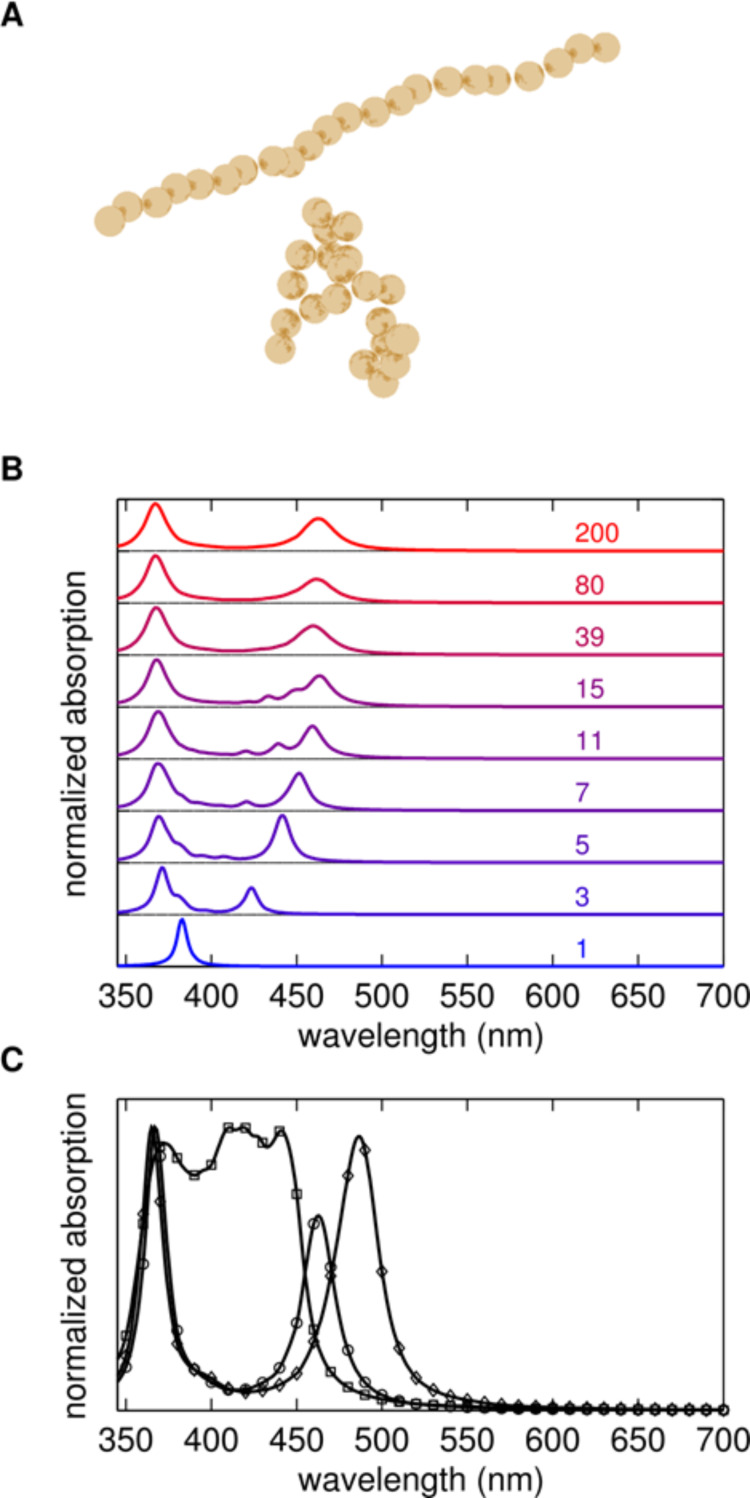Figure 2.
A) By controlling the allowed attachment point of new particles to the chain, anisotropic (top) and isotropic (bottom) aggregates are obtained. B) As the anisotropic aggregates grow longer, the transverse plasmon shifts to shorter and the longitudinal plasmon to longer wavelengths due to the interaction between the silver spheres. The number next to the curve gives the number of particles in the chains used to obtain the absorption spectrum. C) The spectra for isotropic (squares) and anisotropic (circles and diamonds) aggregates with 200 particles are distinctly different. For isotropic aggregates a broad band is observed without a clear longitudinal plasmon. For anisotropic chains the longitudinal plasmon shifts even further to the red when the inter-particle gap is reduced from 1.4 nm (circles) to 0.7 nm (diamonds) due to the stronger coupling.

